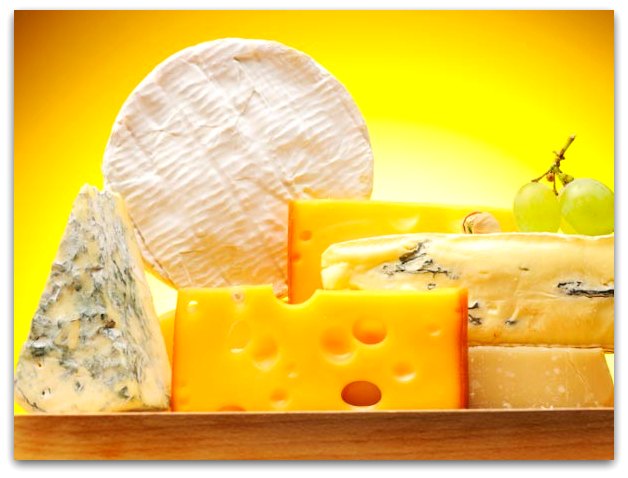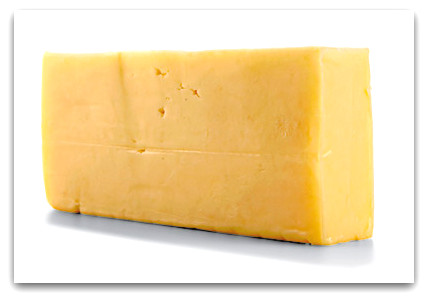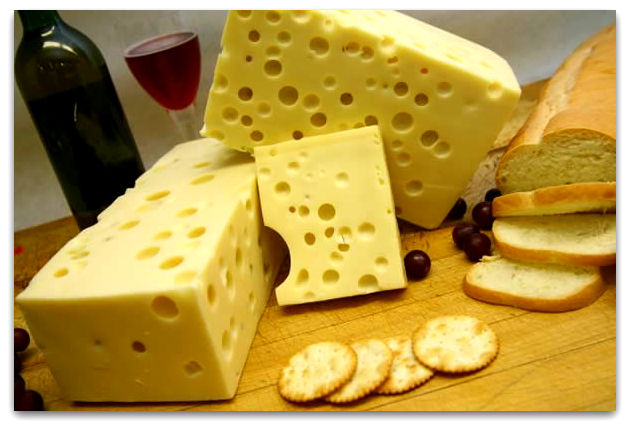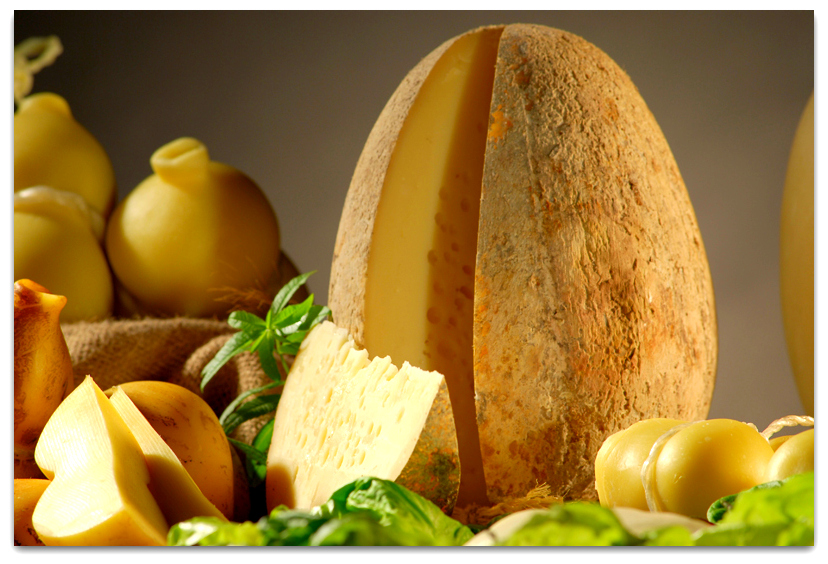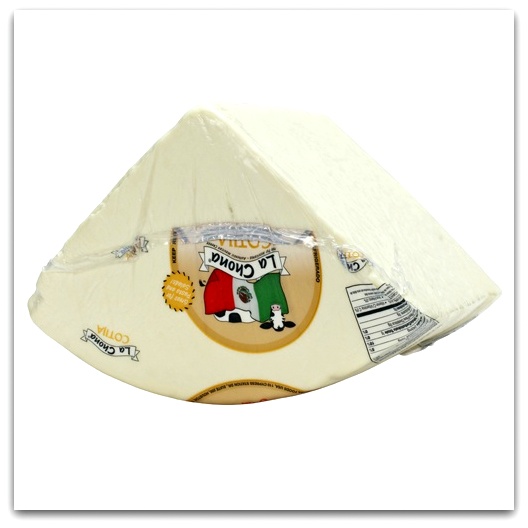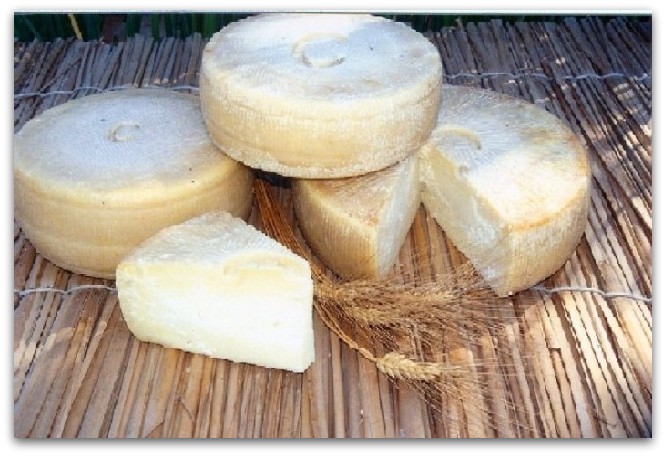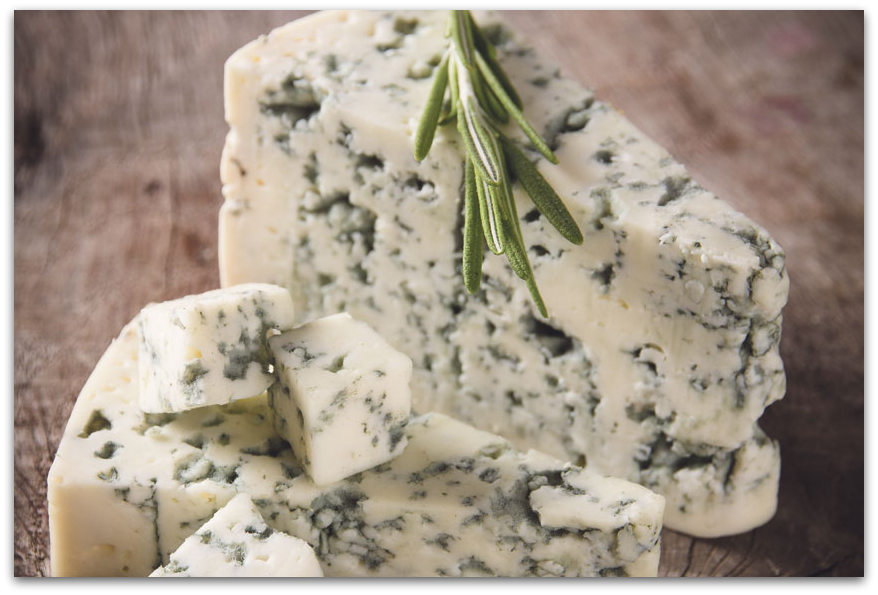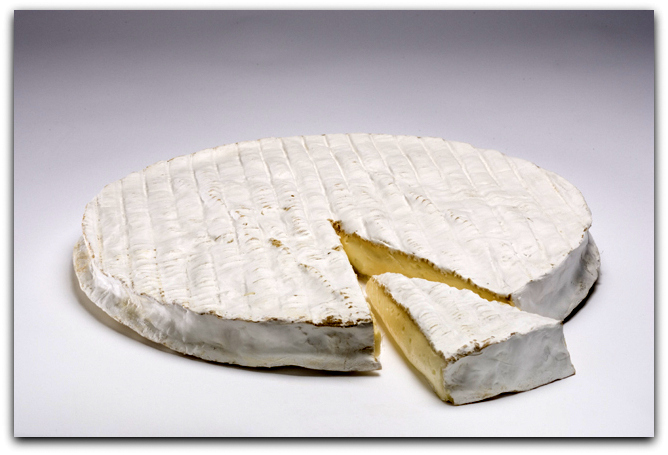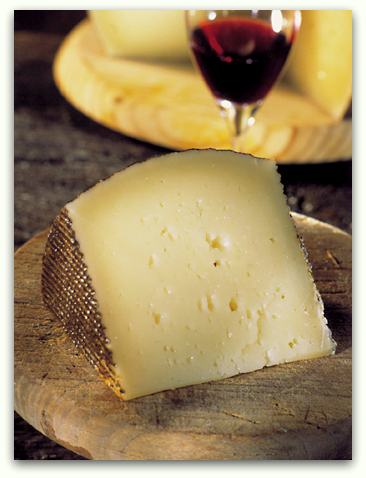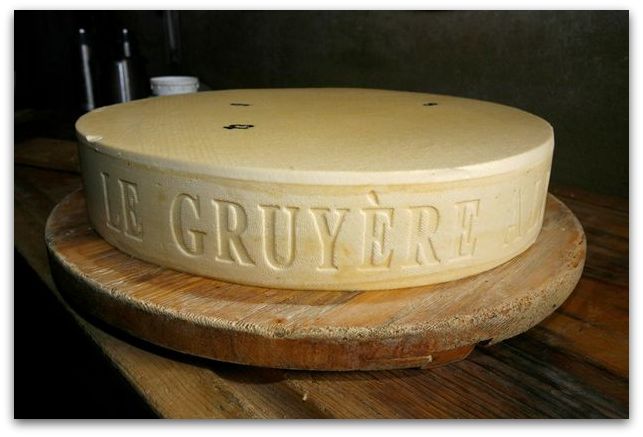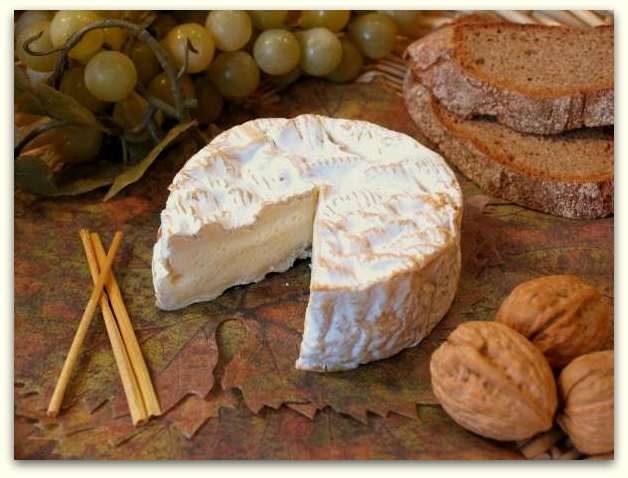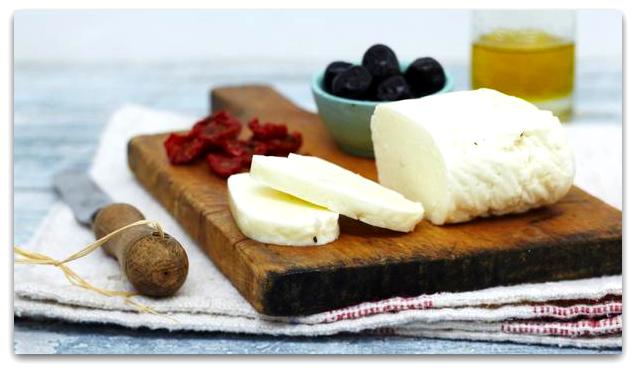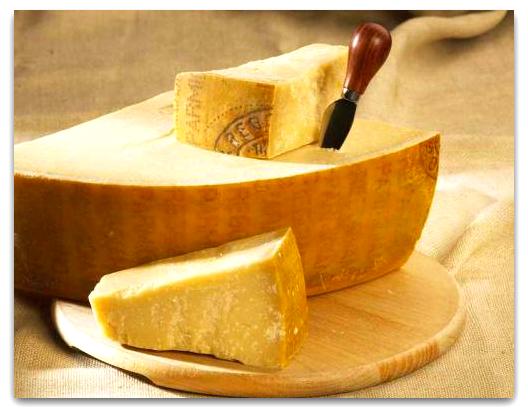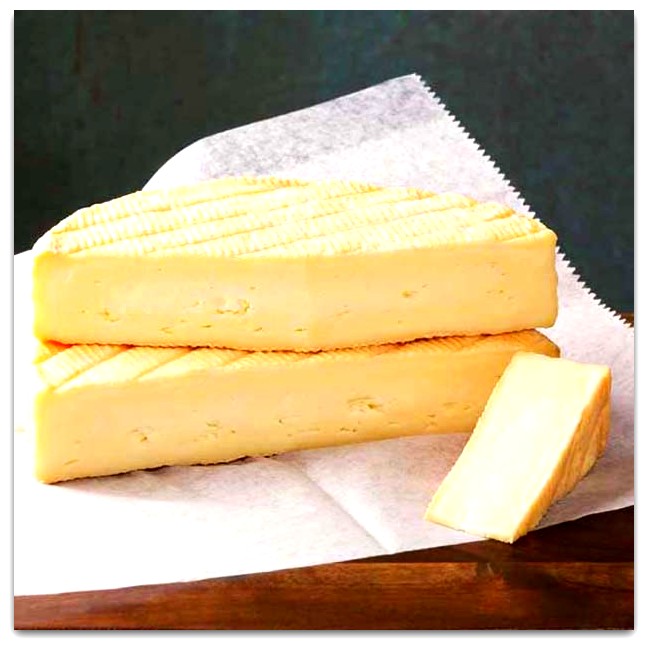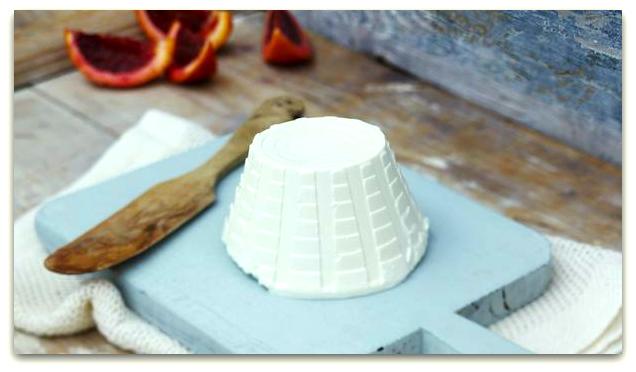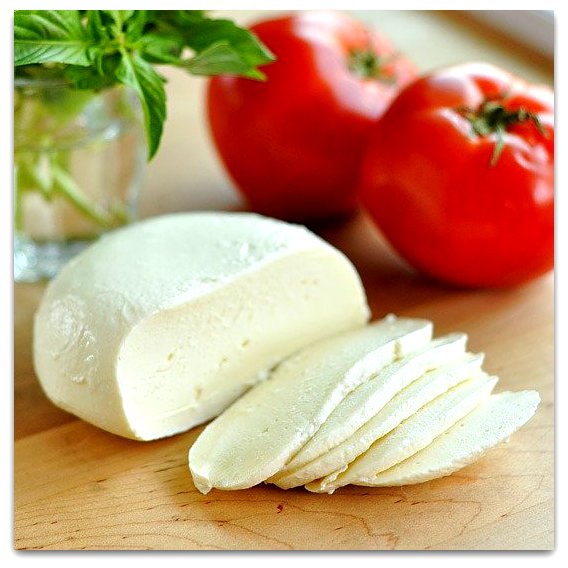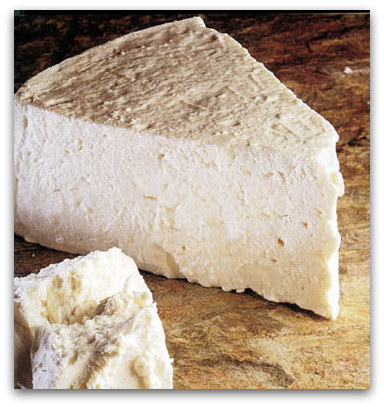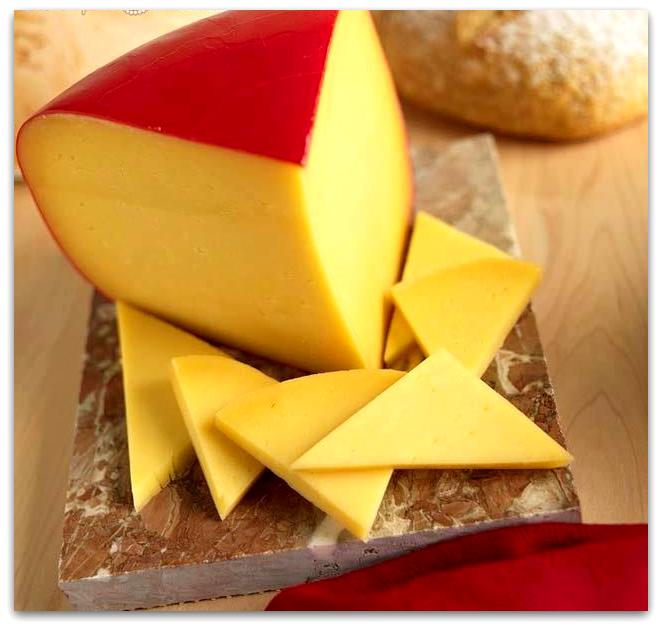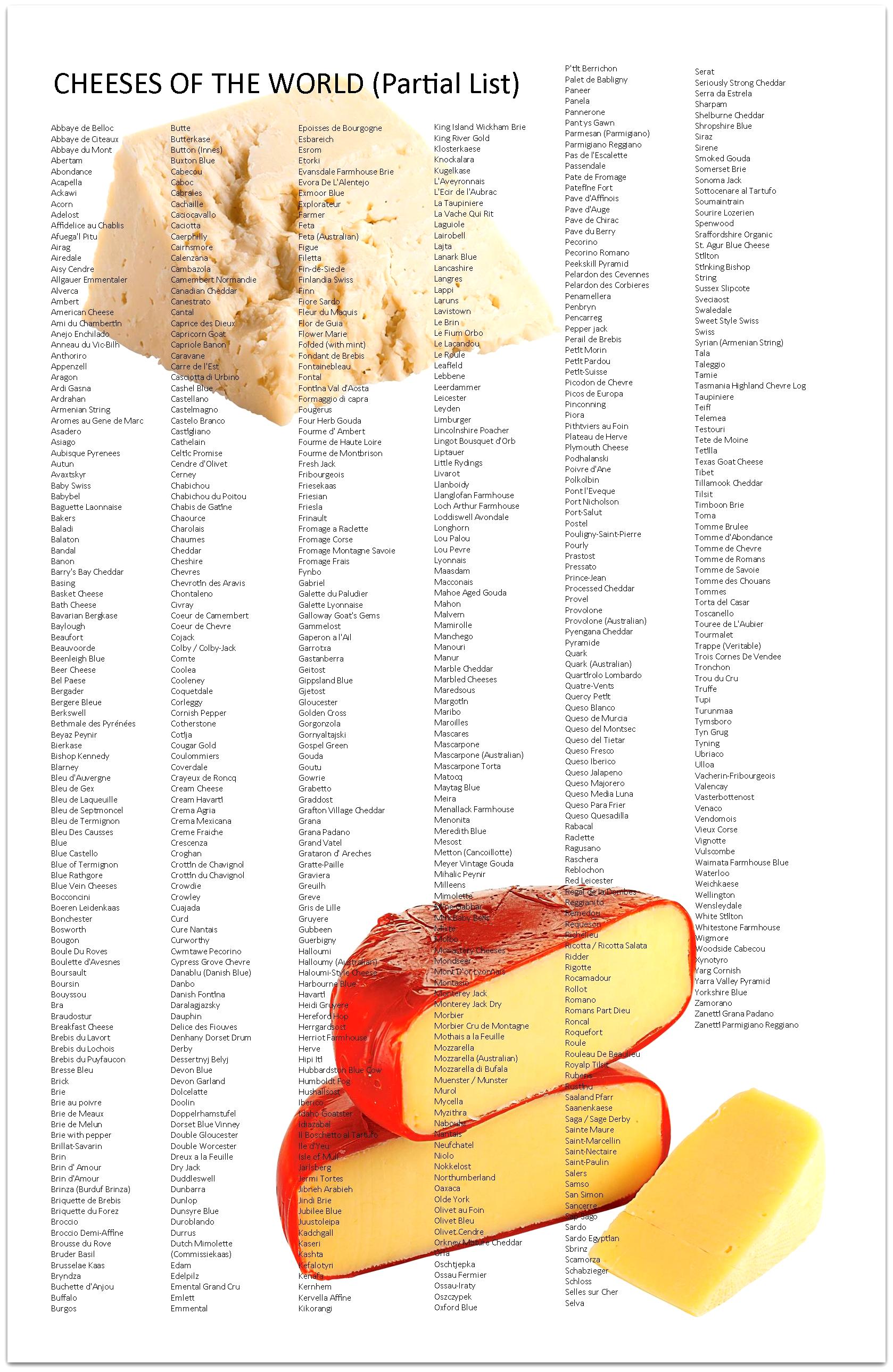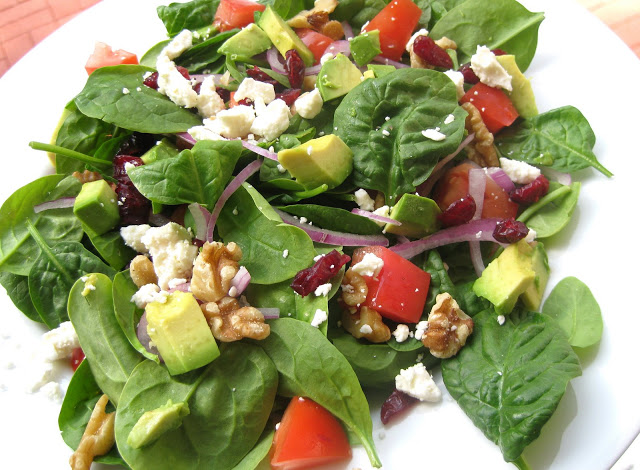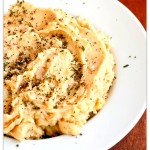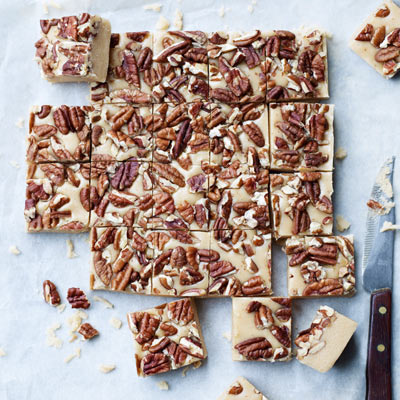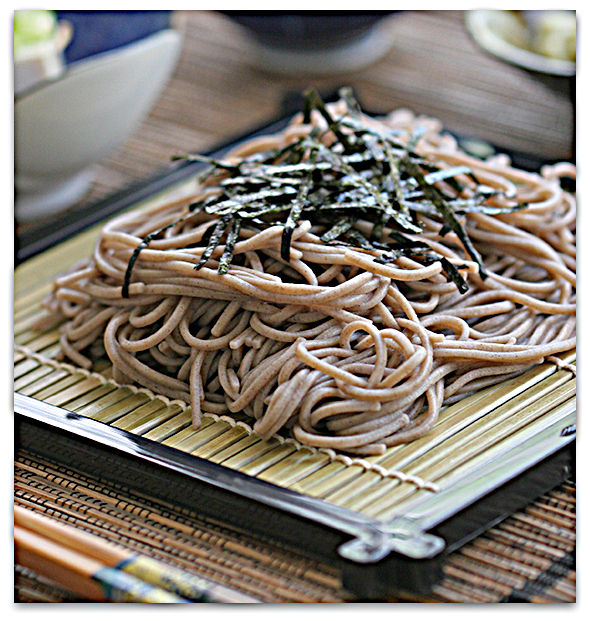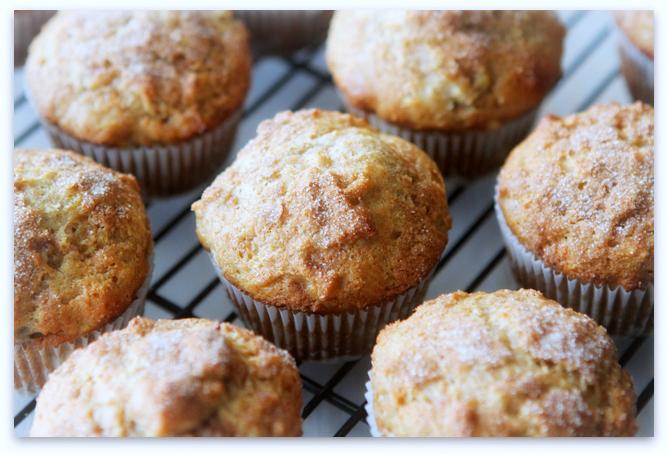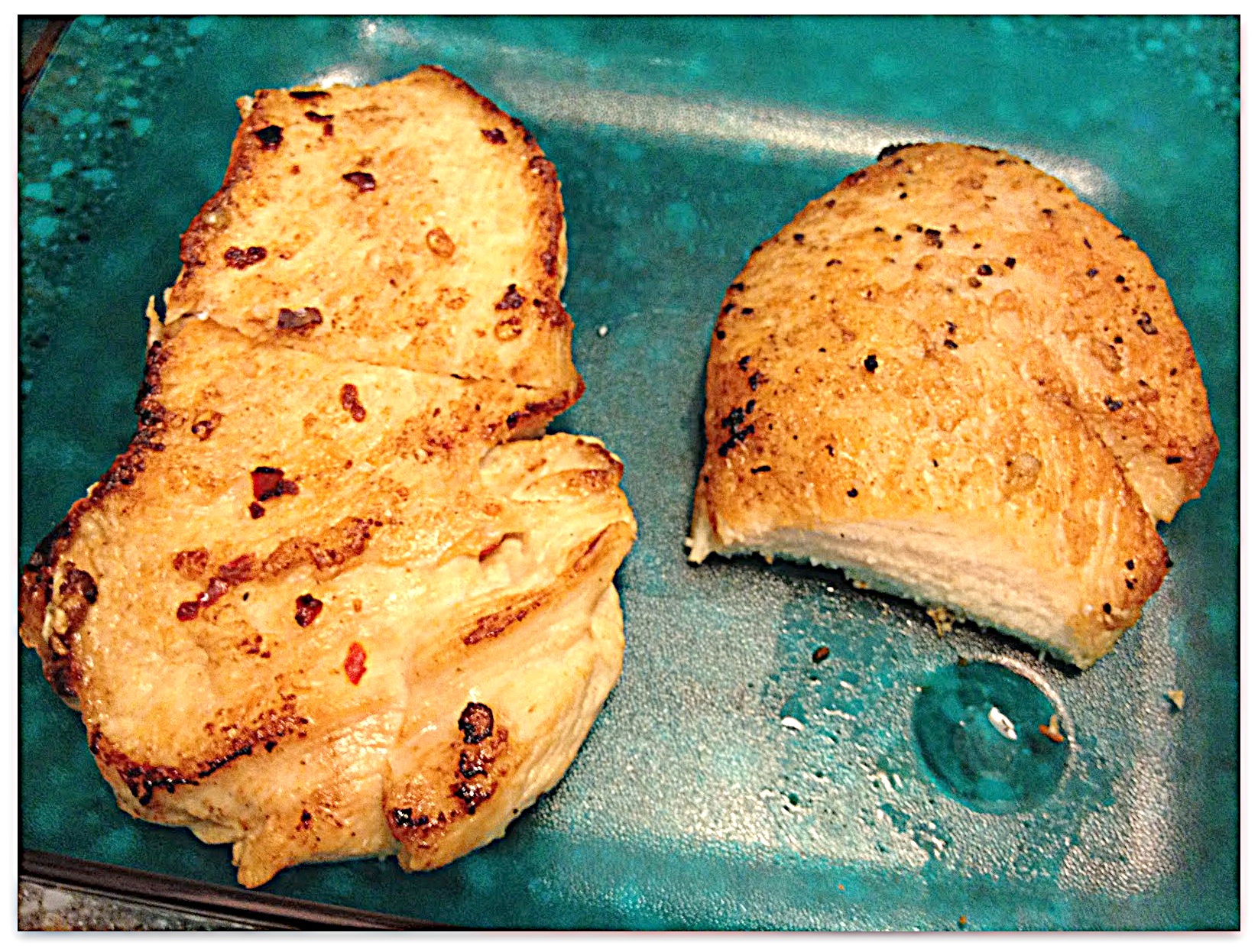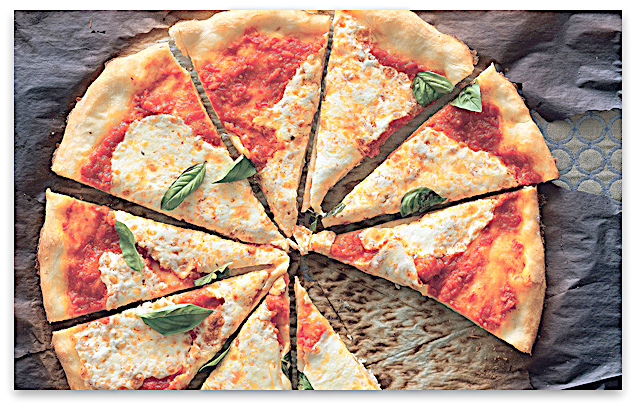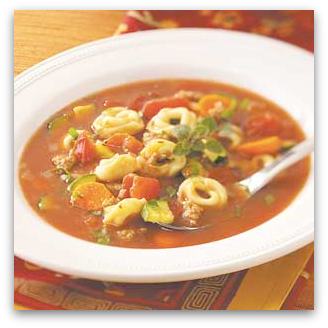Sure, you know there’s more to cheese than Kraft slices and Velveeta logs. But walking through the gourmet cheese section of your supermarket can be daunting. There’s everything from fresh to aged, sweet to stinky, spoonable to hackable. Throw in all the milk options—cow, goat, even sheep and you might be ready to squirt your crackers with some Cheez Whiz and call it a day.
We’re taking out the guesswork with our list of the top 20 cheeses every man should try. After polling a panel of top cheese experts from across the country—including speciality cheese shop owners, chefs, and even a food scientist—we whittled down the picks to those which popped up most often on their lists. Then, we placed the expert-vetted cheeses in front of the most discerning critic of all: the average guy.
Let’s get something out of the way right this second: there is no bad cheese. All cheese is good cheese. “But,” you’re probably sighing exasperatedly, “aren’t American cheese, Velveeta and Cheez Whiz bad cheese?” No. Because they are not cheese. And also, they are not always bad.
Clearly, if we wanted to produce a comprehensive list of every single cheese under the sun, ranked from worst to best, it would take our entire lives to compile (we love small cheese-makers, but there are just too many). We promise to do our part as our lives continue to eat every single one, for science. Until then, we’re just going to stick to some of the most popular cheese-making styles. You might not agree with this list. And you should absolutely tell us why in the comments. For cheese. and for science.
Without any further waffling (mmm, cheese waffles) we present the best cheeses, from slightly less than best to best.
20. Jack
A semi-soft cheese with a buttery-ivory colour and a mild flavour similar to American muenster. Named after its creator, David Jacks, a cheese-maker near Monterey, California. Jack cheese is made from pasteurized whole, partly skimmed or skimmed cow’s milk. Unaged jack is ripened for a week, has high moisture and good melting properties making it good for sandwiches and cooked dishes. Some versions include jalapeno chile, garlic and dill. Aged (dry) jack is a pale yellow color with a firm texture and a rich, sharp, slightly nutty flavor. Aged jack is often used as a grating cheese and can be found in speciality cheese shops.
plural: jack cheese
Ethnicity: American Ingredient
Season: available year-round
Substitutions: muenster, gouda, bel paese, samsoe
19. Swiss
Swiss cheese the generic name for several varieties of cheese originally made in Switzerland. In the United States “swiss cheese” is an imitation of the Swiss Emmental or Emmentaler. Swiss cheese is a mild cheese made from cow’s milk and has a firmer texture than baby Swiss. The flavor is mild, sweet and nut-like. Swiss cheese is known for being shiny, pale yellow, and having large holes (called eyes) resulting from carbon dioxide released during the maturation process. Cheesemakers can control the size of the holes by changing the acidity, temperature, and curing time.
Commonly known as “Swiss” cheese, Emmental originally came from the Emme River Valley near Bern. Emmental is one of the largest cheeses in the world, requiring 262 gallons of cow’s milk for one 200-pound wheel of cheese. It is deep yellow in color and has holes the size of cherries, sometimes up to golf ball size. The scent of Emmental suggests meadows, raisins and wood fires. The flavor is strong and fruity with a mature woody finish. French Emmental has a slightly stronger taste that the Swiss variety. Emmental stands well on its own as a snacking cheese. It is fantastic in salads with mushrooms, cornichons, bell peppers and shallots. A Reuben would not be a Reuben without a slice of melting Emmental. Try a slice with apples or pears, rye, pumpernickel or sourdough breads, coarse mustard’s, corned beef and sauerkraut. Fruity red wines such as Beaujolais, Merlot, Syrah or Shiraz are all good choices.
Baby Swiss~ pale yellow in color, it has a soft, silky texture with small holes, or eyes and is made from whole cow’s milk. The flavor is mild, buttery, creamy and slightly sweet. It makes an excellent melting cheese for egg dishes such as omelets, frittatas and quiches. It complements ham, rye and mustard, as well as apples, pears, grapes cashews and corned beef. White wines such as Chardonnay or Viognier, or a red such as Pinot Noir are good choices.
Swiss-Type Cheeses~
Blarney~ Blarney Irish Castle Cheese is a natural, semi-soft part-skim cheese rather like a young Gouda. Available in red wax, it is aged for a minimum of 90 days. Smoked Blarney Irish Castle Cheese is a non-waxed variation naturally smoked over oak fires.
Comte~ Actually a member of the Gruyere family, the actual name is Gruyere de Comte. A round cheese with round marble sized holes, it has a tough and darkly colored rind enclosing a yellowish interior. Aged longer than Swiss Gruyere, Comte is a creamy, piquant cheese with a sweet, fruity flavor.
Jarlsberg~ is a cheese from Norway that is often subsituted for Emmental. It is made from full-cream cow’s milk and is buttery rich, milk and slightly sweet.
Raclette~ a cow’s milk cheese that is fantastic heated under a hot grill. The heat intensifies the full, nutty and slightly fruity aroma of Raclette. When grilled, the rind becomes crunchy and has a wonderfully savory flavor.
Tete de Moine~ Made from rich summer milk, the interior is firm and creamy to straw yellow, darkening as it ages. The flavor is sweet and tangy with hints of musty wood and nuts. It is the strongest of the Swiss Cheeses. A French counterpart is Girollin.
Season: available year-round
Matches well with: apples, pears, grapes, proscuitto ham, salami, fruity white wine, red wine, cran-raspberry juice, tomato juice, merlot, mustards, walnuts, potato dishes, eggs, cured meats. Breads: Rye, French, Sourdough and rustic crackers.
18. Provolone
An all-purpose semi-hard Italian cheese with a firm texture and a mild, smoky flavor. The thin, hard rind is golden-yellow and shiny. Italian-style provolone can be made with buffalo or cow’s milk, or a mixture of the two. Sometimes it’s lightly smoked. Provolone, like mozzarella, is a pulled or stretched curd cheese with two varieties. Dolce (mild Provolone) is aged 2-3 three months, and is a semisoft, mild, smooth table cheese. Piccante is aged 6-12 months and has a stronger flavor. Provolone used for cooking, dessert purposes and grating.
Ethnicity: Italian Ingredient
Season: available year-round
17. Cotija
Other names: queso anejado
Spanish name: Cotija [Ko-tee-hah]
Cotija is a Mexican cow’s milk dry grating cheese similar to Parmesan. In the U.S. you may find a fresher, softer version, similar to Feta but in Mexico this salty cheese is typically aged at least 100 days. The aged version is referred to as “anejo”. This is not a cheese you would add to your cheese board but you would typically use it crumbled or grated over tacos, beans, soups or casseroles. Cotija is named after the Mexican city of Cotija, Michoacán.
The production method involves milling the curds into small pieces before pressing and aging. When cooked, it slightly softens, but does not otherwise change its shape or consistency. In the mouth, the cheese breaks up again to a sandy- or grain-like consistency, adding to the texture of dishes.[1]
Cotija can be purchased in small rounds or large blocks, and it is often used crumbled or grated as a topping for wet burritos, soups, salads, beans, tostadas, or tacos. Like Parmesan, it is often sold already grated.
16. Pecorino
Pecorino is the name given to all Italian cheeses made from sheep’s milk. It covers a wide variety of cheeses produced around the country, but specifically it refers to four main varieties of Pecorino, all of which enjoy PDO protection. These hard ewes’ milk cheeses from central Italy and the island of Sardinia have established a very good export market outside Italy.
Of these four, Pecorino Romano from Sardinia, Lazio and Tuscan Province of Grosseto is the most widely known outside of Italy. The remaining three mature PDO cheeses are Pecorino Sardo from Sardinia, Pecorino Siciliano from Sicily and Pecorino Toscano from Tuscany.
Pecorinos are traditional, creamery, hard, drum-shaped cheeses. They come in a variety of flavors determined by their age. Aged Pecorinos referred to as ‘stagionato’ are hard and crumbly in texture with buttery and nutty flavors. Young or ‘semi-stagionato’ and ‘fresco’ Pecorinos feature a softer texture with mild, creamy flavors. A good Pecorino will have smooth, hard rind that is pale straw to dark brown in color. The rind will vary in color, depending on the age of the cheese, and may include a protecting coating of lard or oil. Its compact interior is white to pale yellow in color, with irregular, small eyes.
Today, this classic Italian cheese is available in many flavors including Pecorino Pepato spiced with black peppercorns or red chili. Pecorino is a preferred cheese in many pasta cheeses and an obvious choice in Italian regions where the cheese is produced. Also, it served as a good substitute for the expensive Parmigiano-Reggiano.
Made from sheep’s milk
Country of origin: Italy
Type: hard
Texture: creamy, crumbly, firm and open
Color: pale yellow
15. Blue
Delicate blue-green marbling makes this family of cheese the most recognizable. The blue mold in the cheese curd comes from a strain of penicillin called “roqueforti.” The aroma and taste of the cheese depends on the intensity of the cure, as well as the shape, size, composition and surface of the cheese, the climate of the curing cellar, and the length of ripening.
Blue cheese is excellent as a table cheese or crumbled on salads. Cut blue-veined cheese last when ready to serve to reduce the risk of cross-contamination.
Bergere Bleue~ is a Roquefort-style cheese made in New York. It has the rich aroma of lanolin and yeast. It has a “melt-in-your-mouth texture like butter. The flavor is of burnt caramel. This moist and slightly crumbly cheese achieves a spicy piquancy from the blue-green streaks of penicillium roqueforti.
Gorgonzola ~ Rumor has it that an innkeeper in Gorgonzola, Northern Italy discovered blue on his aging cheese but served it to customers anyway. The rest is history! Gorgonzola gets its name from the town located in the Po Valley near Milan where it has been made since 879 A.D. Some Gorgonzola cheeses are still ripened in caves that provide the ideal environment for mold and are produced in flatter wheels than traditional blue cheese. Italian-style Gorgonzola ripens to yield a soft creamy texture with an earthy flavor. Wisconsin Italian-style Gorgonzola resembles the dolce latte or sweet-milk Gorgonzolas of Italy that are very creamy.
Maytag Blue~ is produced at the Maytag Dairy Farms in Newton, Iowa. This moist cheese is created in caves and cellars built into the side of a hill where natural molds and yeasts grow. In this temperature-controlled environment Maytag Blue slowly ripens over a period of six months. Maytag Blue has a dense, crumbly texture. As it melts in your mouth it imparts a spicy flavor with a final bite.
Beenleigh Blue~ Similar to Roquefort Beenleigh Blue is made in Deavon, England from unpasturized milk. It has a pure white interior with light blue-green veins. The flavor is mild and the texture is firm. Available from mid-autumn to late spring, the flavor intensifies as the season progresses.
Bleu d’Auvergne~ Made in Auvergne from a traditional Roquefort recipe this semi-soft cheese is made from cow’s milk. The interior is pale yellow with dark blue, well marbled veins. The taste is sharp with hints of herbs and butter, along with a powerful aroma.
Bleu de Causses~ This is a creamy cheese made in the Roquefort area of France using cow’s milk. Maturing in caves where the fresh air currents move the natural molds through the ripening cheese results in a moist cheese with a spicy, sharp flavor. Less salty than Roquefort.
Bleu de Haut Jura~ A French Blue made from cow’s milk, the flat wheel shape of Bleu de Haut Jura results in a cheese that is supple and less creamy. The taste is mild for a blue, with hints of mushrooms and tarragon.
Blue Brie~ A soft blue cheese with a bloomy white rind, Blue Brie is commercially created from cow’s milk. It has a sweet, moderately spicy flavor, creamy texture and a white interior with little marbling. Bresse Blue and Cambazola are similar, but made and packaged in smaller wheels.
Cabrales~ Matured in the caves in Asturias, northern Spain this Spanish blue is a combination of cow’s, goat’s and sheep’s milk. Creamy in texture, it has a complex flavor and powerful aroma.
Danish Blue~ This cheese was created by a Danish Cheesemaker in the early 1900’s. Based on the French blues it is made from cow’s milk, the interior white with a striking blue-black vein. The taste is mild and salty.
English Blue Cheshire~ This cheese was born by accident when mold developed in a standard Cheshire cheese. Now molds are introduced with better distribution of dark blue-green veins in a deep yellow interior.
Roquefort~ An ancient French Blue, Roquefort is made from sheep’s milk and aged in limestone caves. During the curing period, the Roquefort molds develop to create the exquisitely strong, sweet-caramel, yet spicy flavor and aroma of original Roquefort.
Stilton ~ A semi-hard blue cheese, Stilton can be described as a cheddar with veins. It has a natural thick crust, the creamy interior has pronounced blue-green veins. Stilton’s flavor sharpens with age.
Season: available year-round
Matches well with: Mild blues love the company of light fruity white wines while the piquant blues prefer a robust, spicy red. Semi-sweet or sweet wines such as Cavernet, Zinfandel, Chardonnay or Sauvigon Blanc complement the salty taste of Blue Cheeses
14. Brie
Brie is the best known French cheese and has a nickname “The Queen of Cheeses”. Brie is a soft cheese named after the French region Brie, where it was originally created. Several hundred years ago, Brie was one of the tributes which had to be paid to the French kings.
In France, Brie is very different from the cheese exported to the United States. “Real” French Brie is unstabilized and the flavor is complex when the surface turns slightly brown. When the cheese is still pure-white, it is not matured. If the cheese is cut before the maturing process, it will never develop properly. Exported Brie, however, is stabilized and never matures. Stabilized Brie has a much longer shelf life and is not susceptible to bacteriological infections.
Brie is produced from the whole or semi-skimmed cow’s milk. Rennet is added in to raw milk and heated to a temperature of 37°C to obtain the curd. The cheese is then cast into molds, several layers of cheese are filled into mold and then kept for around 18 hours. After this the cheese is salted and aged for minimum four weeks.
Brie cheese is slightly pale in color with a greyish tinge under a rind. Its flavor varies depending upon the ingredients added while producing the cheese.
Brie, one of the great dessert cheeses, comes as either a 1 or 2 kilogram wheel and is packed in a wooden box. In order to enjoy the taste fully, Brie must be served at room temperature.
Made from cow’s milk
Country of origin: France
Region: Seine-et-Marne
Type: soft, soft-ripened
Fat content: 8.4 g/100g
Texture: soft-ripened
Rind: bloomy
Color: white
13. Manchego
The Manchego is produced in the La Mancha region of Spain, which is also home to Don Quixote. It is made from unpasteurized sheep’s milk. It is one of the popular cheeses from Spain, made from sheep’s milk. It also comes under the PDO guidelines.
The traditional use of grass moulds leaves a distinctive, characteristic zigzag pattern on the Manchego cheese. Authentic Manchego is only made from the Manchego sheep’s milk. Manchego cheese is made from both pasteurized and unpasteurized milk. The farmhouse version is produced from unpasteurized milk while the industrial version is made from pasteurized milk.
The rind is inedible with a distinctive, traditional herringbone basket weave pattern, pressed on it. A typical ear wheat pattern is pressed onto the top and bottom wheels of the cheese. There are specific differences in Manchego cheeses, depending on their aging period.
Semi Curado – Young Manchego cheese is aged around 3 months are supple and moist. The flavor is fruity, grass, hay with a tangy note.
Curado – Manchego cheese aged for 6 months acquires a caramel and nutty flavor. It has distinct acidity.
Viejo – Manchego cheese aged for a year becomes crumbly in texture while the interior of the cheese acquires a butterscotch color. It has a sweet, lingering taste.
Manchego cheeses are best paired with a sherry. Cheeses similar to Manchego are called ‘Machego like cheeses’, but the producers cannot legally name the cheese as Manchego.
Made from sheep’s milk
Country of origin: Spain
Region: La Mancha
Type: semi-soft
Fat content: 57%
Rind: waxed
Color: pale yellow
12. Gruyere
Originating from Switzerland. Is a hard yellow unpasteurized cheese made from cow’s milk. It is named after the Gruyere valley of Fribourg, Switzerland. Like other Swiss cheeses, it is filled with many holes. It is usually cured anywhere from 3-10 months. The longer it cured the better. It has a sweet, nutty flavor, with a hint of fruity taste. Rusty brown in color and hard. Great when melted and works well in most recipes. Is good when served with fruit, crackers, and pairs well with French onion soup.
Ethnicity: Swiss Ingredient
Season: available year-round
How to select: Available year round in most grocery stores in the cheese section, or specialty sections of some stores.
Matches well with: This cheese pairs up well with certain wines such as: Chardonnay or Sauvignon Blanc.
11. Camembert
Marie Harel, created the original Camembert cheese from raw milk, in Normandy, France, in 1971. Today, however, a very small percentage of producers make cheese from raw milk with the same process as Marie Harel would have used. Those who produce cheese using Marie Harel’s method, can legally call their cheese Camembert Normandie under the AOC guidelines. However, the production of Camembert cheese has now transcended the AOC designation. Very good varieties of Camembert cheese made from pasteurised milk can be found in Normandy today. The best of them is the Camembert Le Châtelain.
The fresh Camembert cheese is bland, hard and crumbly in texture. Young Camembert has a milky and sweet taste. As the cheese matures it forms a smooth, runny interior and a white bloomy rind that is typical to Camenbert cheese. It has a rich, buttery flavor. The rind is bloomy white caused by a white fungus, called penicillium candidum.The rind is meant to be eaten with the cheese.
This cheese is best paired with a light red wine such as Beaujolais, Chenin Blanc, St Emilion, St Estephe or traditionally a glass of Normandy cider.
- Made from cow‘s milk
- Country of origin: France
- Region: Normandy
- Synonyms: Camembert Le Châtelain
- Type: soft, soft-ripened
- Fat content: 45%
- Texture: creamy, soft-ripened and supple
- Rind: bloomy
- Color: pale yellow
10. Halloumi
Halloumi cheese is making it’s way up the list of popular food trends – and with good reason! Halloumi cheese is a delicious and uniquely grillable cheese. Read on to learn about what is halloumi cheese, cooking and grilling with Halloumi, and some Halloumi recipes, of course!
What is Halloumi cheese? Can I substitute other cheeses?
Traditionally prepared from sheep’s milk in the Greek island of Cyprus, Halloumi is a soft curd-like cheese free of rennet and safe for vegetarians who do not eat rennet. Many similar cheeses are prepared by dairy and goat farmers in Canada and the United States. For legal proprietary reasons, these cheeses are usually called “Halloumi-style” or “grillable” cheeses.
What does Halloumi cheese taste like?
Plain, Halloumi is firm, salty and a bit rubbery, perhaps most comparable to a thick feta, though the taste is certainly unique. Cooked, the saltiness fades into a strong savory bite, with a slightly creamy texture.
How to cook Halloumi cheese:
Try Halloumi grilled, pan-fried or thinly sliced. Try it instead of mozzarella in a caprese salad, or serve it with watermelon, as is traditional in Cyprus.
9. Parmesan
A hard, sharp, dry Italian cheese made from skim cow’s milk. It is straw-colored and has rich flavor. Aged: 12-16 months. It is made all over, but the best comes from Italy’s Parmigiano-Reggiano, which is often aged 2 years. (Stravecchio means it has been aged 3 years and stravecchiones, 4 years)
We have Parmigiano reggiano , that means his origin from the region of Parma and Reggio situated both in Emilia Romagna. Another type, of cheese, that seems visually to the parmigiano but his taste is a bit sweeter, is grana padano. This cheese is produced in many places of northern Italy, and padano is the term that defines the long way of Po river, Padano means “of the valley of Po river.” Great battle around those two typical cheeses. In my family i vote for Reggiano, stronger, my wife for Padano, sweeter. Both are made only in those two regions, Emilia Romagna and pianura padana. In Italy, strictly and obviously.
Ethnicity: Italian Ingredient
Season: available year-round
How to select: Pregrated parmesan is available, but the flavor does not compare to freshly grated.
8. Chevre
Definition: Chèvre is a type of French cheese made from goat’s milk.
Depending on how it’s made, Chèvre can have different flavors and textures. Some types of chèvre have a smooth texture, mild, buttery flavor and white color, similar to cream cheese. Other varieties of chèvre are still soft but slightly more crumbly. The flavor of these types of chèvre can be slightly more tangy. Aged Chèvre can be quite firm and yellow in color.
Chèvre can be served as a table cheese, spread on crackers or in canapés. Chèvre is also frequently used in salads.
Chèvre will soften but not completely melt when heated. Chèvre is a popular cheese in pasta dishes and on pizza.
7. Muenster
Munster, also known as Munster Géromé is a soft washed rind cheese made from milk produced by cows living in the regions between Alsace, Lorraine and Franche-Comté in France. The name Munster is derived from the little town of Munster where Vosgian abbeys and monasteries used to make this cheese since the Middle Ages.
Traditional Munster is protected by an Appellation d’Origine Contrôlée (AOC) which requires the cheese be made from unpasteurized cow’s milk called crude milk. The soft and creamy cheese also comes flavored with cumin and tastes best when accompanied with a good beer. As with washed rind cheeses, Munster have a red coating on the rind that is slightly humid due to repeated washings. Other than protecting the cheese, the rind is also responsible for a strong, penetrating aroma and tangy taste.
The best Munster cheeses are produced in the summer and autumn when the cows graze on the ‘high stubble’ of the Vosges. This cheese has a very high fat content of 45-50%. Gewurztraminer or full-bodied red wines nicely complement Munster. If you’re a potato and cheese lover try Munster with potatoes, salad and finely chopped onions.
Made from cow’s milk
Country of origin: France
Region: Vosges, Haut-Rhin, Bas-Rhin
Alternative spellings: Munster-géromé, Munster gerome, Munster fermente
Type: soft, smear-ripened
Fat content: 45-50%
Texture: creamy, smooth and sticky
Rind: washed
Color: white
6. Ricotta
A rich fresh cheese made from skim or whole cow’s milk that is slightly grainy but smoother than cottage cheese. It’s white, moist and has a slightly sweet flavor. Most Italian ricottas are made from the whey that is drained off while making cheeses such as mozzarella and provolone. Technically not a cheese because it is made from a cheese by-product, Ricotta cheese is most frequently used in Italian cooking. The origins of Ricotta cheese reach back into Latin and Mediterranean history. It is believed to have been created in the Roman countryside as travelers cooked their food in big kettles over open fires. The product was cooked twice to extract the cheese from the buttermilk. The name Ricotta is derived from the Latin word recocta, meaning re-cooked or cooked twice. It became a popular food for serving to important guests. Unrelated to soft ricotta, ricotta salada is made of sheep’s milk. The liquid is pressed out and the solids are compacted into rounds, enabling it to be cut with a knife. Its texture is a crumbly but firm.
Ingredient
Season: available year-round
How to select: Good ricotta cheese should be firm, not solid and consist of a mass of fine, moist, delicate grains, neither salted nor ripened.
Matches well with: almonds, chocolate, cinnamon, cloves, garlic, lemon, nutmeg, nuts pepper, pine nuts, spinach, sugar, tomatoes, vanilla
5. Mozzarella
A mild, white fresh cheese made by a special process where the curd is dipped into hot whey then stretched and kneaded to the desired consistency. At one point, mozzarella was made only from water buffalo milk. Now, it is usually made with cow’s milk. There are two forms, regular and fresh. Regular mozzarella is available in low-fat and nonfat forms and has a semi-soft, elastic texture and is drier than fresh mozzarella. Fresh mozzarella is made from whole milk and has a softer texture and sweet, delicate flavor and is typically packed in water or whey. Buffalo mozzarella, is the most prized of the fresh mozzarellas, and is a combination of water buffalo milk and cow’s milk. Other forms of fresh mozzarella are:
Ovolini (egg size) 4 ounce balls
Bocconcini (bite size) 1.50 ounce balls
Ciliegine (little cherry size) .33 ounce balls
Manteca is mozzarella molded around a lump of butter.
Burata is like a mozarella truffle– a ‘skin’ of mozzarella surrounding a mozzarella cream. It can be found at speciality stores. If you can’t find it, you can use fresh mozzarella.
Ethnicity: Italian Ingredient
Season: available year-round
4. Feta
Feta cheese is a rich and creamy soft cheese of Greece, authentically made of whole sheep’s milk, although many are now made with goat’s milk or a mixture of the two. It has been around for centuries, and hardly a Greek meal does not incorporate feta cheese in some manner. It is so popular in Greece that very little gets exported. In fact, most of the imported feta cheese comes from Italy. Nowadays, many countries produce forms of feta cheese, including Australia, Denmark, Germany, and of course, the United States. However, modern-day, less robust versions may be made from cow’s milk, skimmed milk, or partially-skimmed milk.
Feta cheese is classified as a soft cheese made of 45 to 60 percent fat whole sheep’s or goat’s milk. The better fetas are aged (but not ripened) 4 to 6 weeks, cured in a salty whey and brine. Known as a pickled cheese, the flavor of feta becomes sharper and saltier with age. It is creamy white in color with small holes, a crumbly texture, and is normally found in square cakes with no rind.
Feta is prized in salads or eaten as a snack and has the added benefit of melting quickly in hot dishes such as in filling for spanakopita or stifado.
Unfortunately, due to the great demand for feta cheese in Greece and restrictions on unpasteurized milk, you will probably have difficulty finding the real thing outside of Greece. If you do find it, it will be pricey. Most of us will have to suffer using an inferior but still serviceable imitation.
3. Gouda
Gouda, or “How-da” as the locals say, is a Dutch cheese named after the city of Gouda in the Netherlands. If truth be told, it is one of the most popular cheeses in the world, accounting for 50 to 60 percent of the world’s cheese consumption. It is a semi-hard cheese celebrated for its rich, unique flavor and smooth texture. The original cheese markets in Gouda is one of the last standing commercial cheese markets in the Netherlands. Since the name is not protected, it has become a generic classification for all cheeses produced and sold under the name Gouda.
Gouda is typically made from pasteurized cow’s milk although some artisan varieties use sheep’s or goat’s milk to produce cheeses that are going to be aged for a long time. Boerenkaas is a typical variety of unpasteurized Gouda cheese produced by the farmers from milk of cow’s grazing on the natural, low pastures of Netherlands. There are seven different types of Gouda cheese, categorized depending on age. Graskaas is young Gouda ready to be consumed within weeks of production. On the other hand, is the extra aged, Overjarig cheese which has a full-flavored, hard, golden interior and salty flavor reminiscent of a toffee. Between the spectrums is a variety of Dutch Gouda’s classified as per the texture and age – Jong, Jong belegen, Belegen, Extra belegen, and Oud. Each cheese gets increasingly firmer in texture and richer in flavor than earlier classification. The waxed rind of the cheese also changes by the age as soft, younger Dutch Gouda cheese are identified by yellow, orange, or red wax rinds white mature cheese have black wax coverings.
Stacked Gouda Wheels
In America, smoother and less flavorful commercial Gouda is popular than Dutch Gouda. Artisans in Netherlands may produce Dutch Gouda using raw milk as well as pasteurized. To enhance the flavor of the cheese, herbs, seasonings, and nuts may be blended. In Netherlands, aged Gouda is commonly used to richen soups, sauces.
Young Goudas are best paired with beer while medium cheeses taste best when paired with a fruity Riesling or Chenin Blanc. A well aged Gouda complements wines that are deeply flavored such as a rich Merlot or Shiraz. Gouda cheese may be grated, sliced, cubed or melted. It may be used as a table cheese or dessert cheese.
Gouda is available in large wheels with each weighing between 10 and 25 pounds.
- Made from cow‘s, goat‘s or sheep‘s milk
- Country of origin: Netherlands
- Region: South Holland, Gouda
- Synonyms: Boerenkass Gouda, Graskaas Gouda, Jong Gouda
- Type: semi-hard, artisan, brined, processed
- Fat content (in dry matter): 76%
- Fat content: 31 g/100g
- Calcium content: 958 mg/100g
- Texture: crumbly, dense and springy
- Rind: waxed
- Color: yellow
2. Burrata
This made-to-order cheese is hand-formed into 8-ounce balls and packaged in water for an extended shelf life. It boasts a richly sweet, milky flavor and a unique soft and silky texture. The name “burrata” means “buttered” in Italian.
The outer appearance of Burrata is resilient, glossy and mildly flavored.
Inside is rich,soft, and creamy, with an almost buttery texture and flavor.
Richly sweet, milk flavor.
Serving Suggestions
Burrata is a very delicate cheese and handling of the product should be limited. Suggest removing the seal from the cup and draining the water. Portion the cheese while still inside the cup. Remove the portions to be eaten and reseal remaining portions. Use within 1-2 days for best flavor. Burrata is usually served fresh at room temperature.
Goes Well With
Pair with roasted peppers, herbs, cured meats, melon, grapes and light wine. Goes well with salad, prosciutto crudo, hard crusted bread, fresh tomato with olive oil and cracked black pepper, or pasta. Cut and serve on endive leaves for a fresh tasting appetizer, or create a caprese sandwich with Burrata, sliced Roma tomatoes, fresh basil, olive oil, salt and pepper. Serve with fresh grilled vegetables for an antipasto.
1. Cheddar
A popular cheese that originated in the village of Cheddar, England. A firm, cow’s milk cheese that ranges in flavor from mild to sharp and in color from a natural white to pumpkin orange. Orange cheddars are colored with annatto, a natural dye. Canadian cheddars are smoother, creamier, and are known for their balance of flavor and sharpness. Cheddars vary in flavor depending on the length of aging and their origin. As cheddar slowly ages, it loses moisture and its texture becomes drier and more crumbly. Sharpness becomes noticeable at 12 months (old cheddar) and 18 months (extra old cheddar). The optimal aging period is 5-6 years; however, for most uses three-year-old cheese is fine and five-year-old cheddar can be saved for special occasions.
Caerphilly is a farmhouse cheese that takes it’s name form a Welsh Village. It is buttery and milky tasting, it has a natural gray rind and creamy beige-to-yellow interior. Mild and salty it is one of the most easily digested cheeses.
Cantal is also known as Cantal de Salers and is a French Cheese. Less dense than Cheddar, it’s flavor is more refined. When young, Cantal has the sweetness of raw milk, aged has a tangy, buttery flavor.
Cheshire is one of England’s oldest cheeses. Cheshire is made from both heat-treated and raw cow’s milk. It’s texture is loose and crumbly. Cheshire has a milk and lightly salty taste.
Derby is similar to both Cheddar and Cheshire, but softer in texture and more delicate in flavor. Derby is a dense, off white cow’s milk cheese with a soft, flaky interior and buttery flavor.
English Cheddar is made in blocks from pasteurized cow’s milk. The best English Cheddar is matured for a minimum of nine months. The texture of English Cheddar should be smooth and firm, not crumbly or rubbery.
Gloucester~ Single and Double. Single Gloucester is made from fat-free cow’s milk. Best eaten “young”-around 10 weeks of age. Double Gloucester is made from whole milk and is matured for four to eight months. Double is creamier than Single and the taste is not as sharp.
Lancashire is a farmhouse cheese in origin. Cow’s milk Lancashire is made in large cylindrical shapes. When young the soft creamy cheese crumbles when sliced. The interior is white and the flavor is mildly lemony. Aged, the interior darkens, the texture becomes firm, and the flavor sharp and mellow.
Leicester is cow’s milk cheese originally made using milk left over from the production of Stilton cheese. Carrot juice was used to give the cheese a vibrant orange color. Today the color is achieved using annatto dye. This dry cheese has a nutty flavor.
Tomme de Savoie is a hard French cheese. The rind is “fuzzy”. The aroma is earthy, sort of mushroom, grass and caramel mixed together. This cow’s milk cheese has a sweet flavor with a citrus tang.
Wensleydale dates back to the Norman Invasion. Originally made with sheep’s milk, today it is produced in commercial dairies using cow’s milk. It is crumbly, creamy white and has a mild, lightly salted taste.
plural: cheddar cheese
Ethnicity: English Ingredient
Season: available year-round
How to store: Can be frozen if cut into small 1/2-pound chunks, and wrapped in airtight packaging. Thaw in the refrigerator, and use soon thereafter.
Substitutions: colby, tilamook, cheshire, american cheese





